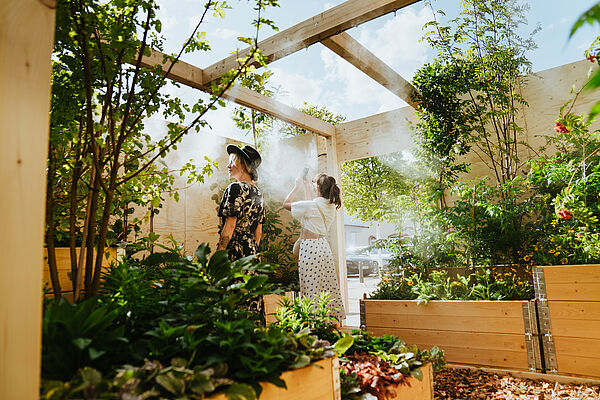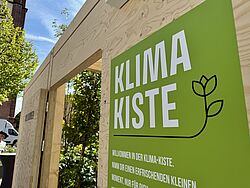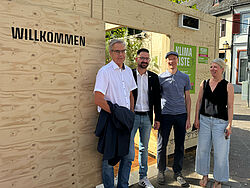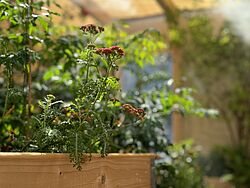What if you could order climate adaptation as easily as an online product? That's the idea behind the Climate Box project, which equips German towns with large wooden crates packed with green oases that bring cool, fresh air and shade to hot town centers.
The Climate Box project began in the town of Hamelin in 2023 and was met with such success that a second box has now been constructed in Geisenheim just one year later. "This project is the result of close collaboration between Hamelin, the university town of Geisenheim, and Hochschule Geisenheim University and was made possible by funding from the LEADER program," says Christian Aßman, the mayor of Geisenheim.
Climate Adaptation in a Box
Resilience to heat is becoming an increasingly urgent issue as climate change continues to impact our planet. Taking a walk through the Climate Box allows passers-by on Geisenheim's central square a chance to cool off, a significant relief in light of rising summer temperatures. Trees and shrubs inside the box provide fresh air, and a water atomization system creates a noticeably cooler atmosphere than that of the urban environment outside. Hochschule Geisenheim University sponsored the interior decoration of the Climate Box, and all plants were provided by the university's Department of Urban Horticulture and Planting Design. "With sustainability in mind, we selected particularly robust trees and shrubs for the Climate Box to ensure that the greenery is well-equipped for the future," says Dr. Alexander von Birgelen, who holds the Professorship for Plant Use at Hochschule Geisenheim University and who supported the design of the Climate Box with his expansive knowledge of plant science.
The project has been well-received throughout Germany, with other towns and cities already registering their interest in receiving a Climate Box of their own. The Climate Box project is also featured as one of the entries to the German Tourism Award 2024, the winner of which will be decided by a public vote held on September 3, 2024.
Another Successful Collaboration with the Town of Geisenheim
The Climate Box is the second project that Hochschule Geisenheim University and the town of Geisenheim have realized together in the last few months. The first was the complete redesign of the Park am Blaubach as part of the Green Geisenheim cooperation project. The new park opened at the end of May and now offers Geisenheim residents another pleasant, cool green space in the town center, which has been designed according to their needs.
Developing high-quality urban green spaces is at the core of the Green Geisenheim project.
Further Information
- More on the Park am Blaubach
- More on the Green Geisenheim project
- More on the Department of Urban Horticulture and Planting Design





![to campus south;; M. Faust 2023 [Translate to English:] Bild Unter Campus](/fileadmin/_processed_/6/9/csm_MF_HEADER_UNTERERCAMPUS_b3323b9354.jpg)






